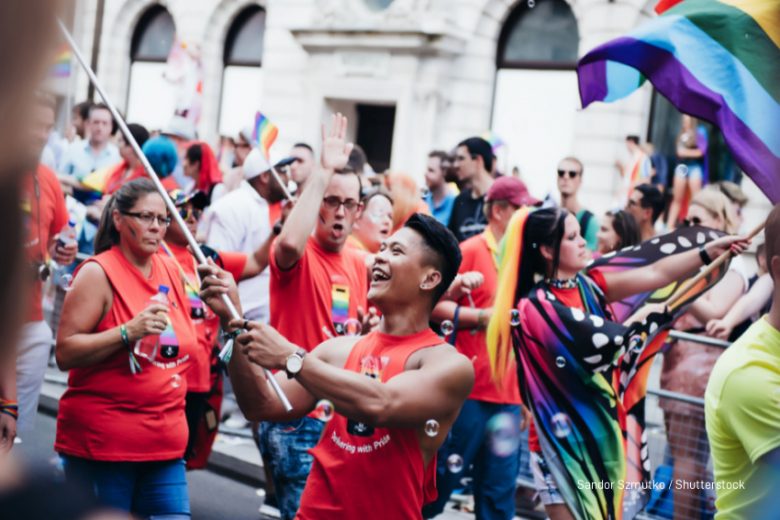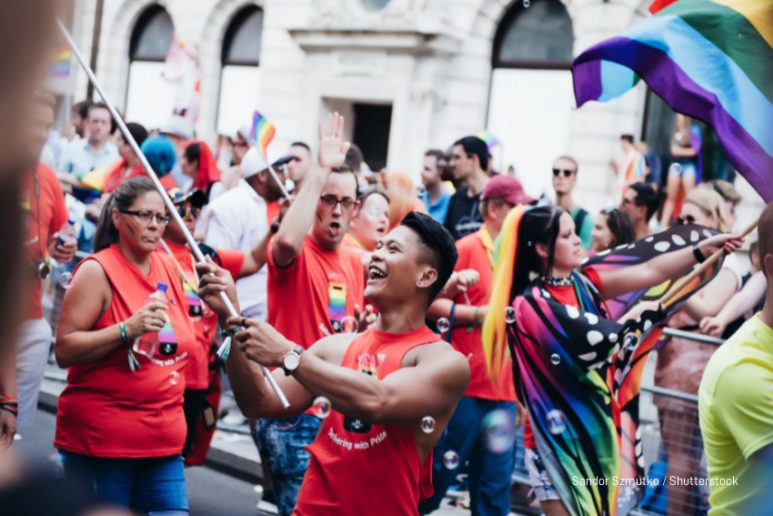By Joseph Monaghan
Before sexual acts between men became legal in England and Wales with the 1967 Sexual Offences Act, backed by the Church of England and the House of Lords, living as a gay man had, for centuries, meant facing many human rights challenges and social humiliations.
Police regularly raided bars and clubs that offered a safe space to form connections and support systems. Homosexuality was considered a psychological illness in need of treatment by the majority of the public, and often going further than that, many gay men over centuries were imprisoned for ‘buggery’. LGBT people had no legal rights protections in the way that heterosexuals did.

In the United States, the human rights circumstances for gay men were relatively the same as in the UK. However, the Stonewall riots of 1969 meant that the indignation and anger of the queer community, after decades of discrimination, would be heard on a national and international level. Four hundred people rioted against the police after several raids of the Stonewall Inn bar.
Stonewall inspired gay groups to form in the UK. In 1970, the Gay Liberation Front was founded, and as numbers grew, a couple of years later, the first London Pride march was held on 1st July 1972, three years after the Stonewall riots.
There had been a recent sense of reluctant tolerance of homosexuality in England in the late 1960s, but with the first Pride march, LGBT people came together in a sense of community in order to create visibility, to express anger at the discrimination they faced, but also to celebrate being LGBT.
This was less of a traditional protest or indeed a riot like Stonewall had been, and more of a premeditated event of celebrating identity and sexuality within a hostile, homophobic society, with approximately 2,000 participants walking from Hyde Park to Trafalgar Square. The aim was to be seen, and this has had its effect over the years. LGBT people have a prominent voice now in a way that for many years was misrepresented.
Peter Tatchell was one of the activists present at the first UK Pride Rally, and described police as not being aggressive or against the protest, but simply surprised, noting that “they’d just never seen so many gay people before.” Straight passers-by looked on in shock. There had not been such a visible display of community, and this ‘taking up space’ is what has led to the landscape of LGBT rights changing in the UK.
Pride has allowed LGBT people to be heard as a minority for 50 years now, with the most recent London Pride this month involving over 1 million attending. Pride has sprung up nationally and internationally – with most cities and countries having some form of Pride event. There is now also a Pride Month held internationally every June.
One thing that is often overlooked however, is that although Pride has increasingly given representation to a call for acceptance of gay identities and lives, there was also another form of progress in LGBT visibility that occurred in the summer of 1972. The British news publication ‘Gay News’ published its first issue. As Peter Ackroyd explains in his history of queer British lives, Queer City,
‘Gay News [testified] to the broader sense of community and self-assertion in those who were even then learning to be called and to call themselves ‘gay’.
So not only did Pride lead to a stronger sense of identity for those attending the protest, Gay News existed as a subversive publication of counter-cultural discourse in a landscape of traditionally heteronormative forms of media. Representation and communication like this rallied together more people towards the cause of gay rights, despite censorship trials and backlash. LGBT people in the UK began to create their own representation and their own voice, leading to stronger activism and existing at the forefront of culture.
Since the first Pride protest, marriage equality laws came into place in 2013, and adoption laws changed in 2002 to include the right for gay couples to adopt. The Equality Act of 2010 meant that discrimination against LGBT people was now against the law. Over time, queer activism and visibility has changed the landscape of hostility towards LGBT people. Many gay men have since been pardoned for their criminal convictions of being arrested for homosexual activity before the 1967 Sexual Offences Act.
As gay rights campaigner Peter Tatchell claimed in 2017 –
“We have made fantastic progress. Compared to two decades ago, Britain is almost a different country. All the main anti-gay laws have been abolished. We are now one of the best countries in the world for gay equality.”
Nevertheless, many have commented on how, as Pride over the years has become more of a commercial celebration and less of a protest however, that the event has become commercialised and depoliticised. Some have commented that Pride should return to its radical roots.
Other branches of Pride have become yearly protests and events over the years, including London-based Black Pride and more recently Trans Pride, coming at a time in which trans rights are constantly debated and questioned in a way that gay rights have been in previous decades. As one organiser says,
“Trans Pride is for all those gender outcasts who don’t have the luxury of going back to a comfortable life and a comfortable world that cares about them, their health, and their ability to get around unharmed once Pride Month is over.”

